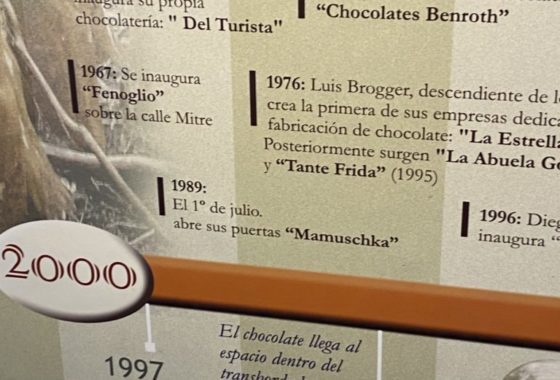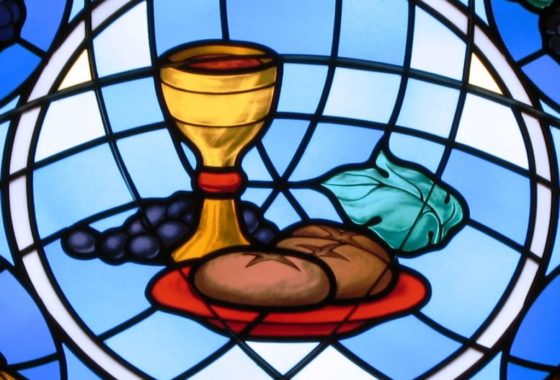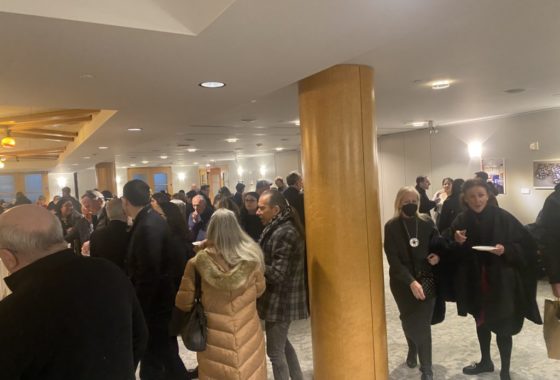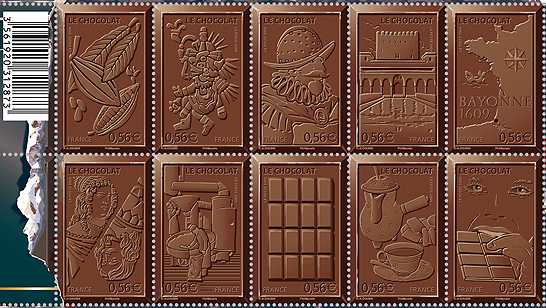
That Time Jews Smuggled Chocolate to France — and a Recipe for Basque Chocolate Cake
Published July 13, 2016 at The Forward
I happened into a chocolate shop, L’Atelier du Chocolat de Bayonne in Paris in 2006 with my husband. As we were tasting and browsing, I randomly picked up a company brochure. In my high school French, I slowly deciphered this astonishing statement:
À Bayonne l’origine de la fabrication et de la consommation du chocolat semble remonter au début du VXIIème siècle, lorsque les Juifs pourchassés par l’Inquisition s’installèrent dans le bourg de Saint Esprit.
At Bayonne the origins of the manufacturing and the consumption of chocolate happened at the beginning of the seventeenth century, when the Jews exiled from the Inquisition settled in the suburb of Saint Esprit.
First, I had to remind myself that this meant Bayonne, in southwest France, and not Bayonne, New Jersey. Then, I re-read the passage because in all of my years of Jewish studies, seminary and teaching about Jews and Judaism, I had never known of any connection between Jews and chocolate. And, it was, after all just my high school French. I would not have been surprised that Jews like chocolate. However, this was telling me that Sephardi Jews, exiled from Spain, brought chocolate making to France. Oooh, la, la.
It turns out that Bayonne Jews such as Emil Péreire, Isaac Péreire, Alvaro Luiz, Jacome Luiz, and Aaron Colace were in the business of importing, exporting, and smuggling cacao. Jews played a key role in this profitable trade through Bayonne to Amsterdam.
When I looked further, I learned that Jews molded that chocolate and its reputation. In September, 1725, it was reported that Bayonne chocolate for drinking was sold in marble-sized balls prepared on a stone (à la Pierre), or as known in the New World, a metate. With time, the reputation of Bayonne chocolate was so well established that dealers in Carcassonne, a fortified town also in the southwest of France, preferred chocolate from the Bayonne area known as à la Bayonnaise.
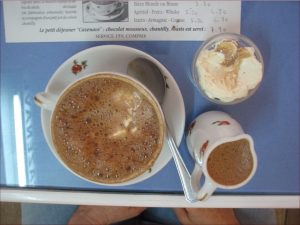
Many sources repeat this idea that Jews imported chocolate making to France including The Encyclopaedia Judaica, Mort Rosenblum’s book Chocolate: A Bittersweet Saga and Joan Nathan’s book about French Jewish cooking. In Bayonne itself we observed that many chocolate stores, several museums, and the city’s tourist literature reiterate the Jewish origins of French chocolate. Without question, this account of Jews introducing chocolate making to France became quite popular in Bayonne.
This pride in the Jewish origins of French chocolate overshadows the complications bubbling in the town’s chocolate past. The Jewish chocolate makers of seventeenth-century Bayonne encountered discrimination, jealousy, and anti-Semitism. Jews could not own or rent commercial or residential property outside of the St. Esprit suburb. They could not live in Bayonne proper. Jews had to leave the city of Bayonne each evening by sunset and were prohibited from selling chocolate on Sundays or Christian feast days.
In citing Bayonne as the original site of French chocolate preparation due to Jews, today’s French chocolate industry has sought to reestablish Bayonne’s authenticity and primacy in a revived post-World War II French chocolate industry. Claiming Bayonne as the center of continuous chocolate manufacture in France overlooks the discrimination against Jews by Bayonnais merchants and nobles. We may speculate about when the first creation of chocolate in France occurred or whether that chocolate was made by a Jew. In this complicated reassertion of its chocolate heritage, Bayonne privileges the idea that Sephardi Jews introduced chocolate fabrication to France.
So, in honor of Bastille Day eat a bit of chocolate, or some French chocolate, or make this popular Bayonne Basque Chocolate Cake. Either way, rejoice that Jews have been in chocolate, l’dor va’ dor, from generation to generation.
Basque Chocolate Cake
Serves 6-8
¾ cup unsalted butter
5½ ounces bittersweet chocolate
3 large eggs
¾ cup sugar
1⁄3 cup all-purpose flour
¾ cup black cherry preserves, for serving
Crème fraîche, for serving
1) Preheat the oven to 375°F.
2) Lightly butter and flour a 9-inch round cake pan. In a large heatproof bowl set over a pan of simmering water, combine the butter and chocolate. Melt over moderate heat, stirring frequently, until smooth, about 4 minutes. Remove from the heat and let cool slightly. In a medium bowl, using an electric mixer, beat the eggs with the sugar at high speed until thick and pale, about 3 minutes. Add the flour and beat at low speed just until combined. Fold in one-third of the melted chocolate, then gently fold in the remaining chocolate; do not over mix.
3) Pour the batter into the prepared pan and bake for 20–30 minutes, or until a toothpick inserted into the center comes out clean. Invert the cake onto a rack and let cool.
4) In a saucepan, warm the cherry preserves over moderate heat. Cut the cake into wedges and serve with the cherry preserves and crème fraîche.
Recent Posts
-
On the Chocolate Trail in Bariloche, Argentina
In March, Mark and I finally extended our chocolate trail explorations in celebration of our special anniversary to Bariloche…via Miami, Buenos Aires, Ushuaia, Antarctica, and Buenos Aires again. There were international flights, a cruise, a couple of domestic flights to get there. All of the travel was amazing, but Bariloche, sometimes called the chocolate capital
Read more › -
Sunday Yeast Polemics: On the Bread Trail
Leavened bread or not? While some of us may think of Passover, the question applied to Eucharistic bread and created significant division in the early Christian Church. The leavened bread for Sunday use was often baked at home by women. Over time, preferences shifted to clergy, church-produced, breads… and, the Eastern Orthodox Church preferred a
Read more › -
Sweet Treat: Chocolate and the Making of American Jews
You may wonder: how did chocolate help define American Jews? Through chocolate, we see that Jews were part of America since its earliest days. Well, since 1701 at least, Jews in the Colonies made part of their living through chocolate. Several Sephardim, leaders of their New York and Newport Jewish and secular communities, participated in
Read more › -
How About Some Uterus Challah?
When Logan Zinman Gerber felt enraged about the loss of reproductive rights in the U.S., she baked challah. Not any challah. She shaped it into a uterus. It wasn’t long after the birth of her daughter that Gerber, a longtime challah baker and staff member of the Religious Action Center of the Reform movement, considered
Read more ›
Some Previous Posts
(in alphabetical order)
- "Boston Chocolate Party" Q&As with Deborah Kalb
- 2022 Media for The "Boston Chocolate Party"
- A Manhattan synagogue explores the rich, surprising history of Jews and chocolate
- About Rabbi Deborah Prinz
- Baking Prayers into High Holiday Breads
- Boston Chocolate Party
- Digging into Biblical Breads
- Exhibit Opens! Sweet Treat! Chocolate & the Making of American Jews
- For the Easiest Hanukah Doughnuts Ever
- Forthcoming! On the Bread Trail
- Funny Faced Purim Pastries
- Good Riddance Chameitz or, The Polemics of Passover's Leaven
- How About Some Uterus Challah?
- Injera*
- Jewish Heritage Month: Baseball & Chocolate!
- Matzah - But, the Dough Did Rise!
- Plan a Choco-Hanukkah Party: 250th Anniversary Tea Party
- Prayers Into Breads
- To Shape Dough: A Trio of Techniques
Archives
2025
▾- All
2024
▾- January
- February
- March
- May
- July
- All
2023
▾- March
- April
- May
- June
- August
- November
- December
- All
2022
▾- February
- April
- November
- December
- All
2021
▾- March
- April
- October
- November
- All
2020
▾- April
- May
- June
- October
- December
- All
2019
▾- January
- February
- April
- May
- July
- August
- September
- October
- December
- All
2018
▾- February
- March
- April
- May
- July
- September
- October
- November
- December
- All
2017
▾- January
- February
- March
- July
- September
- October
- November
- December
- All
2016
▾- January
- February
- March
- May
- July
- August
- October
- November
- All
2015
▾- January
- February
- March
- May
- June
- July
- September
- November
- All
2014
▾- February
- April
- May
- June
- August
- September
- November
- All
2013
▾- March
- April
- May
- June
- July
- September
- November
- All
2012
▾- January
- February
- March
- April
- September
- October
- November
- December
- All
2011
▾- April
- July
- August
- October
- November
- All
2010
▾- January
- February
- April
- July
- August
- September
- October
- All
2009
▾- January
- June
- July
- August
- October
- All
2008
▾- August
- September
- October
- November
- All
2007
▾- January
- June
- July
- All
2006
▾- November
- December
- All
